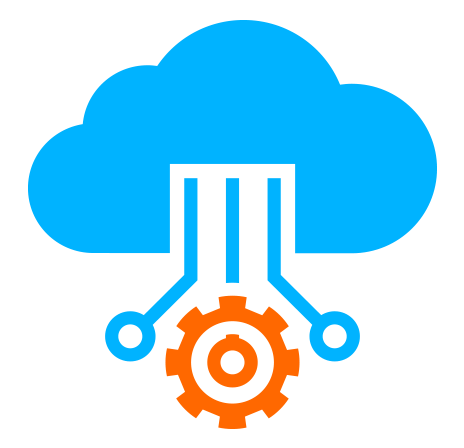 Server
Colocation
Server
Colocation
 CDN
Network
CDN
Network
 Linux Cloud
Hosting
Linux Cloud
Hosting
 VMware Public
Cloud
VMware Public
Cloud
 Multi-Cloud
Hosting
Multi-Cloud
Hosting
 Cloud
Server Hosting
Cloud
Server Hosting
 Kubernetes
Kubernetes
 API Gateway
API Gateway

In today’s data-driven world, the explosion of unstructured information—images, videos, audio, documents, chat logs—has made it clear that traditional databases are struggling to keep up. In fact, over 80% of global data is now unstructured, and that number is only increasing with the growth of Generative AI tools like ChatGPT, DALL·E, and advanced recommender systems.
To keep pace, businesses are shifting to a new form of data infrastructure: AI vector databases. These are designed to store, index, and retrieve data not by rows and columns, but by semantic meaning. Yes, we’re talking about the future of search—where a user doesn’t need to know exact keywords but can still retrieve what they want using natural language or image-based queries.
As cloud-native companies embrace AI at scale, understanding the difference between traditional databases and AI vector databases becomes crucial—not just for developers, but for CTOs, architects, and product managers looking to build intelligent systems. And if you’re deploying on Indian infrastructure, platforms like Cyfuture Cloud are offering high-performance server environments optimized for both.
Let’s dive deep into what sets these two database systems apart, and why it matters more than ever in 2025.
Let’s start with what most of us already know. A traditional database—whether it's relational like MySQL, PostgreSQL, or Oracle DB, or non-relational like MongoDB—stores data in structured formats.
Here’s how it typically works:
You store data in tables (rows and columns).
You retrieve data using SQL queries (for RDBMS) or JSON-style queries (for NoSQL).
It’s deterministic, meaning the query has to exactly match the schema or indexed attributes.
It works well for structured, categorical, numerical, or relational data—think customer profiles, product listings, transactions, etc.
Traditional databases excel at CRUD operations (Create, Read, Update, Delete) and are the backbone of most business systems today. But when it comes to semantic search, recommendation systems, image recognition, or natural language search, they hit a wall.
An AI vector database is designed specifically to handle high-dimensional vectors—the kind produced by machine learning models.
Here's what that means in practice:
When you input text, images, or audio into an AI model (like BERT, GPT, or ResNet), it doesn’t return raw strings. Instead, it converts the input into a vector—a list of floating-point numbers (often 256, 768, or 1024 in length) that captures the semantic meaning.
These vectors are then stored in the vector database.
When a new input comes in, it is converted into a vector and compared to existing vectors using similarity search algorithms (cosine similarity, Euclidean distance, etc.).
The result? You can search by meaning, not just by exact keywords.
For example:
Search: "Who won the 1999 Cricket World Cup?"
Traditional DB: Needs an exact match or predefined question
Vector DB: Understands the context and returns results even if phrased differently
Popular vector databases include Pinecone, Weaviate, Milvus, and FAISS (by Facebook). And many are now being integrated directly into cloud platforms, including Cyfuture Cloud, to make AI-powered apps more accessible and scalable.
Let’s break it down by core functionalities and performance areas.
Traditional DB: Works well with structured data (tables, numbers, categories)
AI Vector DB: Built for unstructured data like text, audio, images, and video
If your app involves NLP, voice search, or AI-generated content—vector databases are your best bet.
Traditional DB: Relies on structured queries using SQL/NoSQL
AI Vector DB: Uses vector similarity search (ANN - Approximate Nearest Neighbor)
This makes vector databases perfect for semantic search, recommendation engines, and chatbots that rely on retrieval-augmented generation (RAG).
Traditional DB: Indexes columns using B-trees or hash tables
AI Vector DB: Uses inverted file systems, IVF, HNSW, or quantization techniques to index vectors efficiently
This drastically changes performance, especially when querying across millions of embeddings.
Traditional DB: Struggles with real-time inference for AI-driven apps
AI Vector DB: Optimized for high-performance read-heavy workloads across thousands to millions of vectors
And when deployed on a cloud-native infrastructure like Cyfuture Cloud, you can scale horizontally without worrying about manual server setup.
|
Use Case |
Traditional DB |
AI Vector DB |
|
Customer CRM |
✅ |
❌ |
|
E-commerce Search |
⚠️ |
✅ |
|
Chatbots with Memory |
⚠️ |
✅ |
|
Image Similarity Matching |
❌ |
✅ |
|
Transaction Systems |
✅ |
❌ |
|
RAG for LLMs |
❌ |
✅ |
As you can see, it’s not about one replacing the other—it’s about choosing the right tool for the right problem.
Absolutely. Many modern applications use a hybrid of both:
A traditional database to store metadata (user IDs, timestamps, categories)
A vector database to handle semantic content (user behavior, preferences, embeddings)
This hybrid setup is often managed seamlessly in cloud environments, where APIs can connect both databases behind the scenes. With Cyfuture Cloud, for instance, you can run both types of workloads on separate GPU and CPU instances, linked by a unified storage and networking layer.
Running a vector database at scale requires:
High-performance GPU compute
Parallel processing for real-time similarity search
Scalable storage and low-latency access
Integration with AI inference tools and models
Hosting it on-premises might be possible, but it’s often cost-prohibitive and maintenance-heavy. That’s why deploying vector databases on the cloud is becoming the default.
Cyfuture Cloud, with its support for AI as a Service, serverless compute, and GPU-based environments, allows businesses to:
Deploy AI vector DBs alongside inference models
Use IDE Lab as a Service to test database integration with LLMs
Host both structured and unstructured data with full compliance (especially important for BFSI and healthcare sectors in India)
Let’s quickly explore where vector DBs are already changing the game:
Spotify: Uses vector search to recommend music based on user mood and behavior
Amazon: Combines product metadata (traditional DB) with image similarity (vector DB) for visual search
Google Photos: Allows users to search by memory (“beach trip 2018”) using embeddings, not filenames
ChatGPT with RAG: Retrieves context-aware data using a vector database to answer questions more accurately
If you’re building anything involving AI models, search engines, or recommendation systems, a vector database is no longer optional—it’s foundational.
So, what's the key difference between a traditional database and an AI vector database?
It comes down to how they understand and retrieve information. Traditional DBs rely on structure and precision; vector DBs rely on semantics and context. The more unstructured your data becomes, and the more intelligent your systems need to be, the more vital vector databases become.
In today’s AI-powered world, choosing between the two isn’t about replacement—it’s about alignment. Build with both when needed, and let each one do what it does best.
And as you scale, don’t forget the importance of cloud infrastructure. Whether you're deploying a new image-based search engine or building the next-gen AI assistant, Cyfuture Cloud gives you the compute, storage, and flexibility to make it all possible—without the infrastructure headaches.

Let’s talk about the future, and make it happen!
By continuing to use and navigate this website, you are agreeing to the use of cookies.
Find out more


